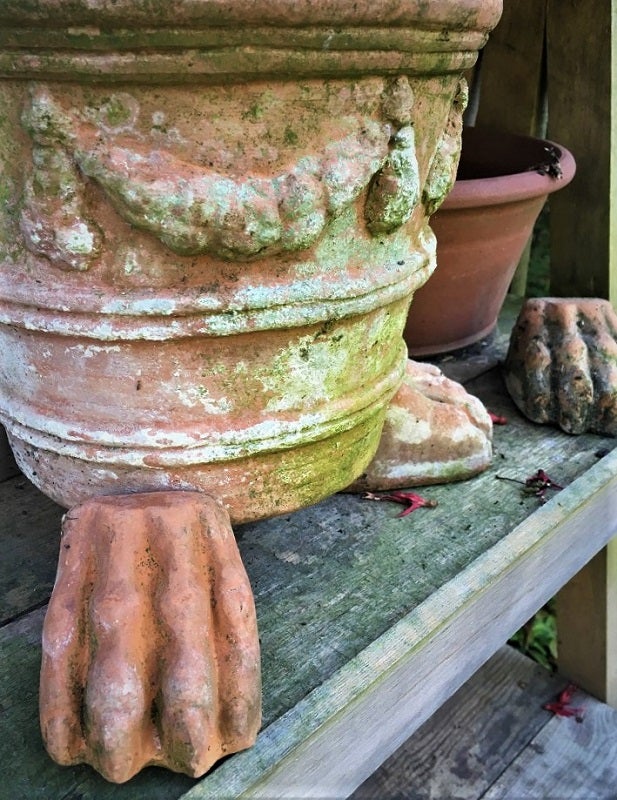Learning the difference between native and perennial plants
Published 10:00 am Sunday, April 14, 2019

- Image by Free-Photos from Pixabay
By Sheri Bethard
Orange County Master Gardener
Last time I talked about selecting the right plant for the right place in your garden, flower bed or yard. This time I am going to talk about native and perennial plants. People tend to get them confused and often consider them the same thing but they are not always.
You can have some plants that are native but are not perennials but then have a native plant that are perennials. Let me try to explain this confusion.
According to the American Horticultural Society a perennial “is any plant that lives for more than two years and usually flowers every year”.
Simple, but this could apply to a lot of plants such as trees, bulbs, succulents and so forth.
Most gardeners understand these woody plants are excluded even though there are some salvias that have bases that become woody in mild climates like ours but further north would need to be cut back in colder temperatures. Climate has a big influence on if the plant will be an annual or perennial.
For example, if it is naturally a perennial but it moved to an area with hot summers or cold winters, it could revert to an annual.
The Native Plant Society of Texas says “Native Plants are drought-tolerant, naturally conserving our precious water resources”. “They provide habitat and food for birds, butterflies, bees and other wildlife. They don’t need special pampering or fertilizing. They are natural to their eco-system and they help us maintain biological diversity.”
They refer to the U.S. Department of Agriculture for the actual definition of “native plant”.
The USDA says it “is a plant that lives or grows naturally in a particular region without direct or indirect human intervention.”
I found one person defined native plants as a species that has inhabited a particular region for one thousand years. I would say yes, that is native.
This definition also goes a little further to describe “naturalized” plants. Those are “plants that were introduced long ago, but are now thriving and spreading without human intervention”.
Take the Chinese tallow and Japanese honeysuckle which are both aggressive naturalized plants that are detrimental to the health of native plants. They are classified as “invasive exotics” and noxious weeds”.
Now that we have the definitions over with let me give you some native and perennials you should try in your gardens.
Now, this does not mean go out and dig up native plants from their natural habitat but look around at your local garden centers, ask friends and relatives. You will be surprised what you will find by asking around. Lots of people are willing to share.
Native plants that do well in Orange County – Black-eyed Susan, Butterfly Weed/Milkweed, Cardinal Flower, Coneflower, Coreopsis, Guara, Gulf Coast Penstemon, Rudbeckia, Greggi Salvia, Texas Mountain Laurel, Wax Myrtle, American Beauty Berry, Carolina Jessamine, Coral Honeysuckle (not invasive), Crossvine.
Perennial plants that do well in Orange County – Alternanthera, Purple Aster, Bronze leaf Begonia, Brazilian Bachelor Button, Cat Whiskers, Columbine, Epidendrum, Asparagus Fern, Foxtail Fern, Boston Fern, Southern Wood Fern, Firecracker Plant, Firespike, Gaillardia, Gayfeather, Gazania, Lantana, Ligularia, Mexican Heather, Mexican Mint Marigold, Nana Coreopsis, Porterweed, Sages (many varieties available), Salvias (many varieties available), Shasta Daisy, Verbena (many varieties available), Yarrow
One category of plants I did not mention we have in Texas only is Texas Superstar® plants.
Texas Superstar® go thru rigorous testing before they are deemed a Texas Superstar® plant. They are tested at multiple locations within Texas in replicated plots for a 5-year period.
During this time the plants are graded on their performance by competent horticulturists who understand the importance of landscape and marketability. Then at the end of the trial period, they are graded one last time and if the plant produces sufficient numbers during the trial period, they are granted Texas Superstar® status. This means they should stand up to any kind of beating Texas weather has to give them wherever they are planted.
One of the plants you may be familiar with first and foremost is the famous Texas Bluebonnet.

Image by Mabel Amber, still incognito… from Pixabay
Other Texas Superstar® plants are Angelonia (Serena series), Duranta, Firebush, Flare Hibiscus, New Gold Lantana, Laura Bush Petunia, Moy Grande Hibiscus, Turks Cap, Plumbago, Pride of Barbados, and Vitex.
If you have any questions, please call our Ask the Master Gardener Hot-Line at 409 882-7010 and we will be glad to help you with any of your questions plant related.






